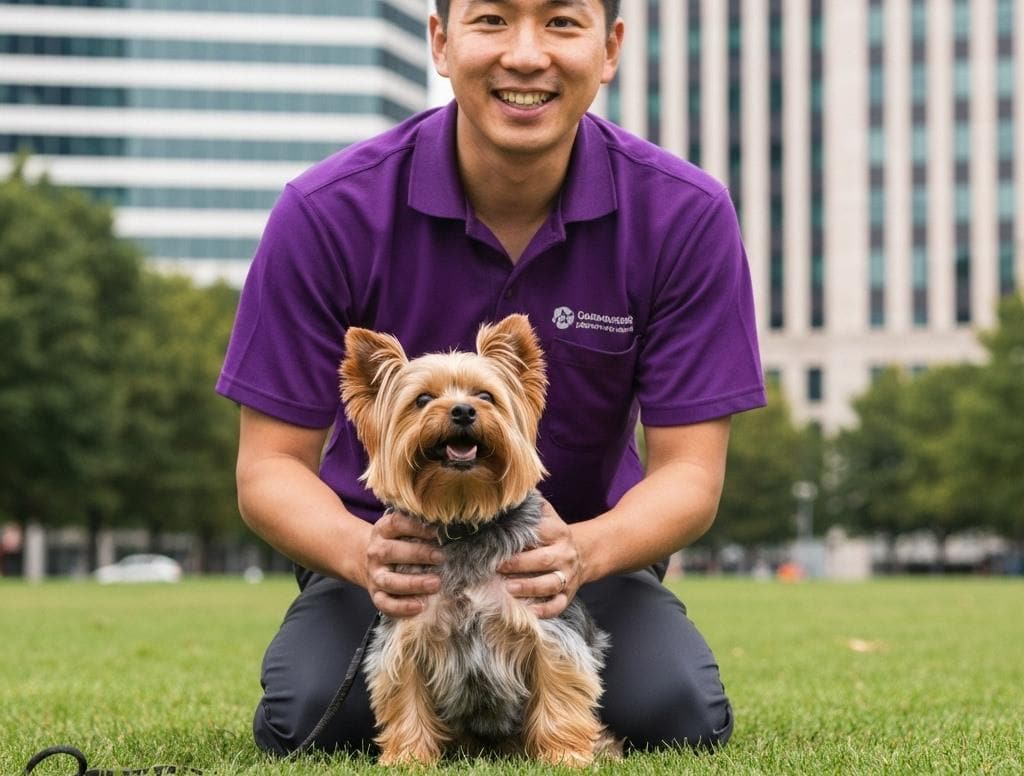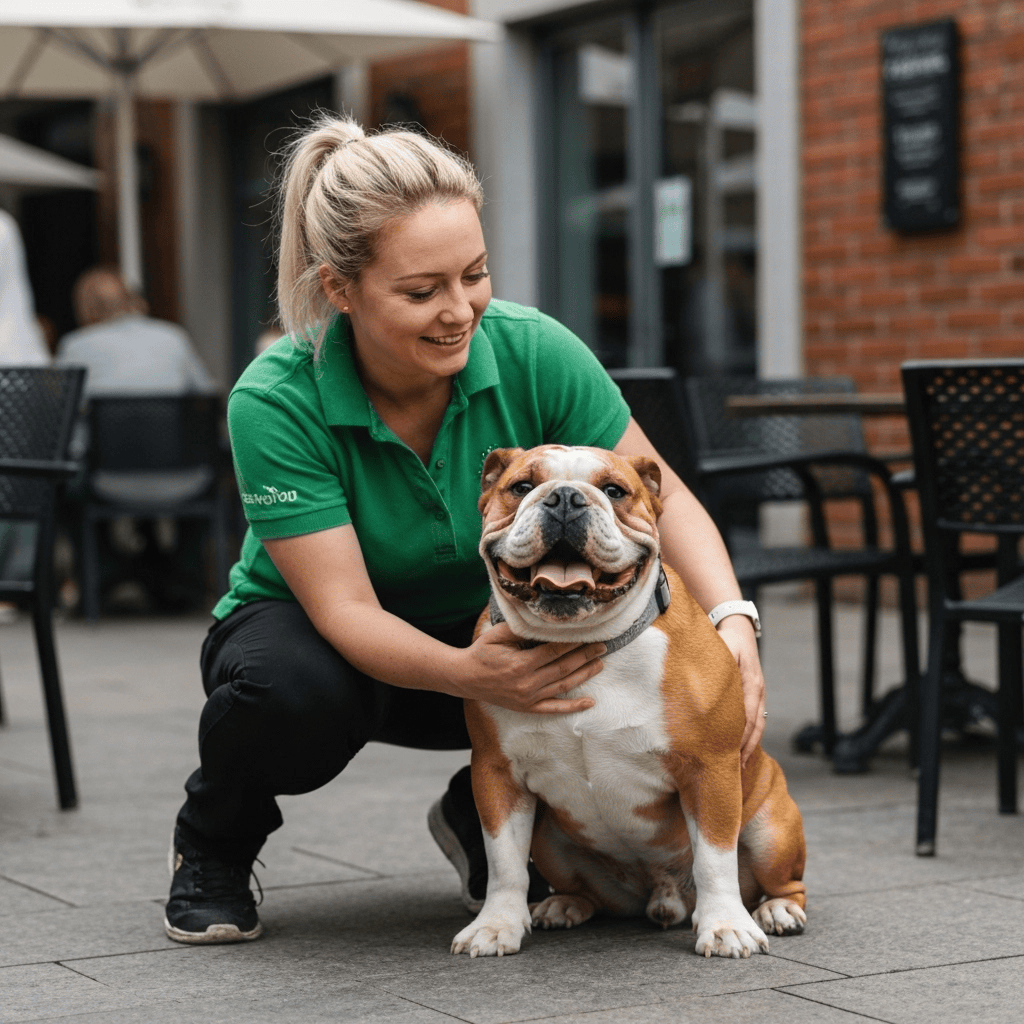Your Complete Guide to Choosing a Dog Trainer in Spring
If you’re a dog owner in Spring, you know the unique challenges this area presents. One day you’re walking quiet residential streets, and the next you’re navigating the bustling crowds at Old Town Spring or dealing with cyclists whizzing by on the Spring Creek Greenway. Your dog needs to handle all of this calmly and confidently.
Spring sits across both Harris and Montgomery counties, which means local rules can vary depending on exactly where you live. The best trainers understand these nuances and know how to prepare your dog for the specific places you’ll actually visit together.
How to Choose the Right Trainer
The foundation of good training is positive reinforcement – rewarding the behaviors you want to see more of. Look for trainers who can explain their methods clearly and show you step-by-step how they’ll help your dog succeed in real Spring locations.
Certifications matter because they show a trainer has invested in learning humane, science-based methods. You’ll want to ask about credentials like CPDT-KA, KPA-CTP, IAABC-CDBC, or CBCC-KA. These aren’t just letters after someone’s name – they represent real education in how dogs learn.
If your goals include off-leash reliability or working around heavy distractions, make sure your trainer knows how to progress safely from backyard basics to public spaces. The last thing you want is to practice recall for the first time at a busy park.
Common Dog Training Methods Explained

The most effective training methods work with your dog’s natural learning style rather than against it.
Positive reinforcement forms the backbone of modern dog training. When your dog sits and gets a treat, they’re more likely to sit again next time. This approach works beautifully for everything from puppy basics to complex behavior changes.
For dogs dealing with fear or reactivity, trainers use desensitization and counter-conditioning. This means gradually changing how your dog feels about their triggers by working at comfortable distances and pairing scary things with good experiences.
Management and life skills training covers the everyday behaviors that make life smoother. Door manners, loose leash walking, and settling on a mat become essential when you’re navigating Old Town Spring’s weekend crowds or stopping for coffee along your walk.
Proofing in the real world means starting simple and gradually adding distractions. Your dog might sit perfectly in your living room but completely ignore you near the playground at Spring Creek Greenway. Good trainers know how to bridge that gap safely.
Stay away from trainers who rely on intimidation, shock collars, or other punishment-based methods. These approaches can increase anxiety and actually create more behavioral problems down the road.
Average Cost of Dog Training in Spring (Updated for 2025)
Training costs in the Spring area reflect both the service type and the trainer’s experience level. Here’s what local dog owners typically pay:
| Service Type | Typical Price | What It Usually Includes |
|---|---|---|
| Group classes (4–6 weeks) | $160 – $300 | Basic manners or puppy socialization in small groups |
| Private training (60–90 min) | $100 – $180 per session | One-on-one coaching at home or a local park |
| Puppy packages (4–6 lessons) | $350 – $650 total | House training, crate skills, socialization, basics |
| Day training (trainer works your dog) | $500 – $1,000 per week | Multiple pro sessions weekly plus owner handoffs |
| Board and train (2–4 weeks) | $2,200 – $4,500 total | Daily pro training plus transfer lessons |
| Behavior consults (fear/reactivity) | $125 – $250 initial | History review, assessment, written plan |
Prices tend to be higher for complex behavioral issues, travel to outlying areas, or trainers with advanced certifications like CTC or CPDT-KSA. Most trainers offer package deals that reduce the per-session cost when you commit to multiple lessons.
Questions to Ask a Potential Dog Trainer
Before you hire someone, make sure they’re the right fit for you and your dog:
- What training methods do you use, and how do you keep sessions positive and low-stress?
- What certifications do you hold, such as CPDT-KA or KPA-CTP?
- How will you customize a plan for my dog and my household?
- Where will we practice in Spring, and how do you add real-life distractions safely?
- What is included in your package, and what is the total price?
- Do you carry liability insurance, and can you share proof if a venue asks?
- For fear or reactivity, do you coordinate with veterinarians if needed?
Local Rules and Practical Tips for Spring Dog Owners
Since Spring is mostly unincorporated, the rules governing you and your dog come from Harris County, Montgomery County, or local entities like The Woodlands Township.
Leash requirements are pretty straightforward in most county and township parks – your dog needs to be on leash except in designated off-leash areas. The Woodlands Township maintains several dog parks where your pup can run free.
Rabies vaccination is required by Texas law, and both counties take this seriously. Harris County Public Health provides detailed information at Animal Bites and Diseases, while statewide rabies guidance comes from the Texas Department of State Health Services.
Pet licensing isn’t required in unincorporated Spring areas, but microchipping is strongly recommended by local shelters. If your dog ever gets loose, a microchip is often the fastest way to get them home. Montgomery County Animal Shelter offers microchipping services.
Noise complaints about excessive barking can become an issue, especially in neighborhoods with HOA rules. A good trainer can help with enrichment activities and teaching your dog when it’s appropriate to alert bark versus when they need to stay quiet.
Professional trainers who want to hold group classes in public parks usually need permits and must carry general liability insurance. This protects both the trainer and the venue if accidents happen.
Local Spring Practice Spots That Work for Training
Spring offers a nice variety of environments to advance your dog’s skills as they progress.
The Spring Creek Greenway provides miles of shaded trails where you can work on leash manners around cyclists, wildlife, and other dogs. It’s perfect for building focus and impulse control in a natural setting. Check out the official site at Spring Creek Greenway for trail maps and updates.
Old Town Spring gives you real-world practice with crowds, strollers, street musicians, and lots of tempting smells. Your dog will learn to stay calm and focused even when exciting things are happening all around them. Just remember that individual shops have their own pet policies.
Neighborhood parks and fields work great for early training when you need more control over the environment. Start during quiet morning hours, then gradually work up to busier weekend times as your dog’s skills improve.

FAQs
Do trainers need a special license to work in Spring?
Texas doesn’t require dog trainers to have a state license. However, reputable trainers often pursue voluntary certifications like CPDT-KA or KPA-CTP and carry liability insurance when working in homes and public spaces.
Are there leash requirements in Spring?
Yes, county and township parks require leashes except in designated off-leash dog parks. Always check the posted signs when you arrive, since rules can vary between different park systems.
Where can I practice off-leash skills safely?
Fenced dog parks are your best bet, like the ones maintained by The Woodlands Township. Keep your dog leashed until you’re inside the double gates, and consider visiting during quieter times if your dog is still learning reliable recall.
What vaccinations are required for my dog?
Texas law requires current rabies vaccination. Your veterinarian can recommend other vaccines based on your dog’s lifestyle and the areas where you spend time.
How much does training usually cost around Spring?
Group classes typically run $160 to $300 for a 4-6 week session. Private lessons range from $100 to $180 each, though package deals usually reduce the per-session cost. Complex behavioral issues may require higher rates.
Can a trainer work in my apartment or HOA community?
Most trainers are happy to do in-home sessions or meet you at nearby parks. If your community has restrictions on commercial services, your trainer can work with you to find suitable alternatives or provide insurance documentation if needed.
What credentials should I look for?
Focus on science-based certifications like CPDT-KA, KPA-CTP, IAABC-CDBC, or CBCC-KA. These credentials show the trainer has invested in learning humane, effective methods that work with how dogs naturally learn.
Finding the right trainer and sticking with a consistent plan will help your dog become the well-behaved companion you want them to be. Whether you’re strolling through Old Town Spring or hiking the Greenway trails, good training makes every adventure more enjoyable for both of you.